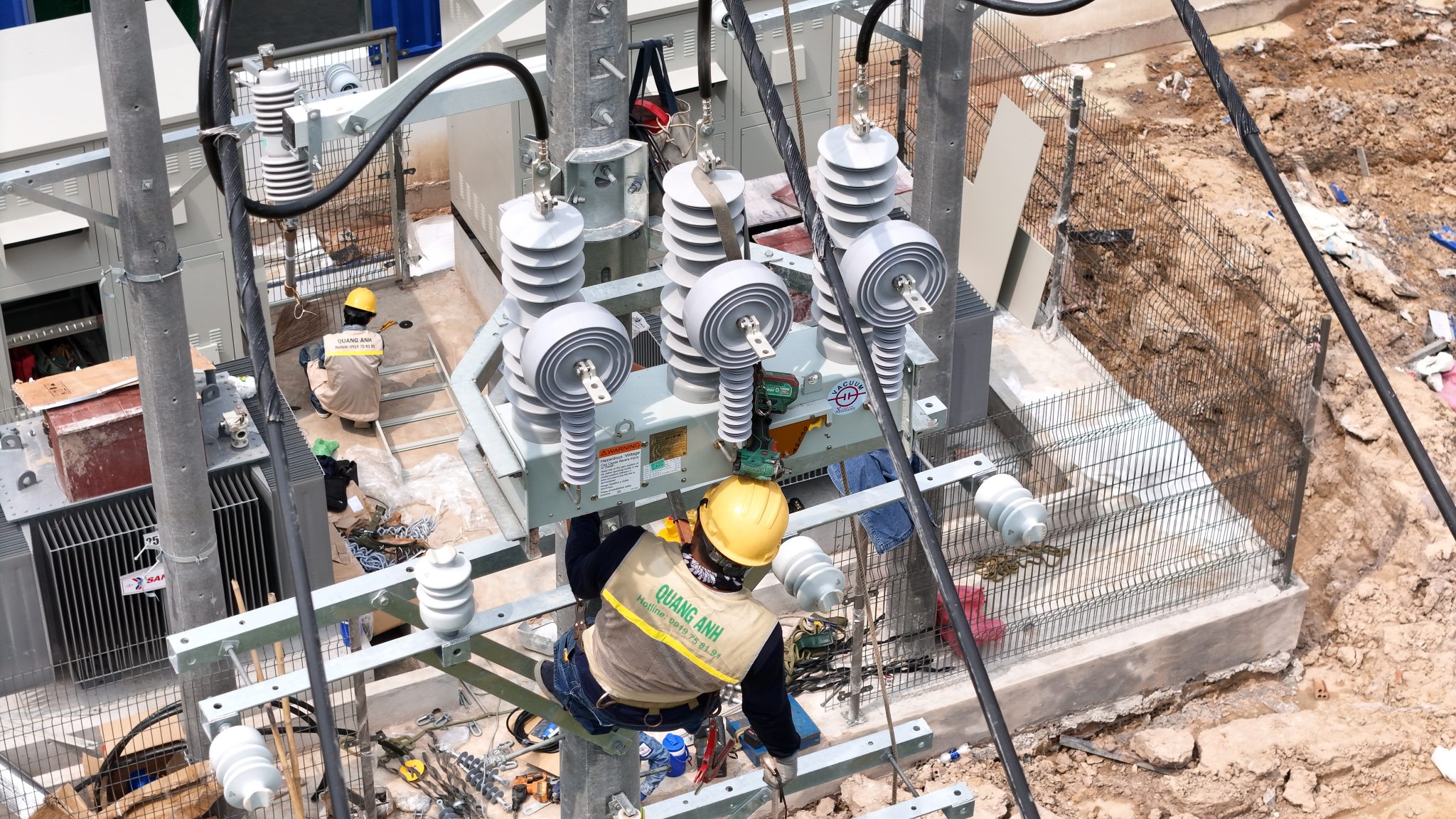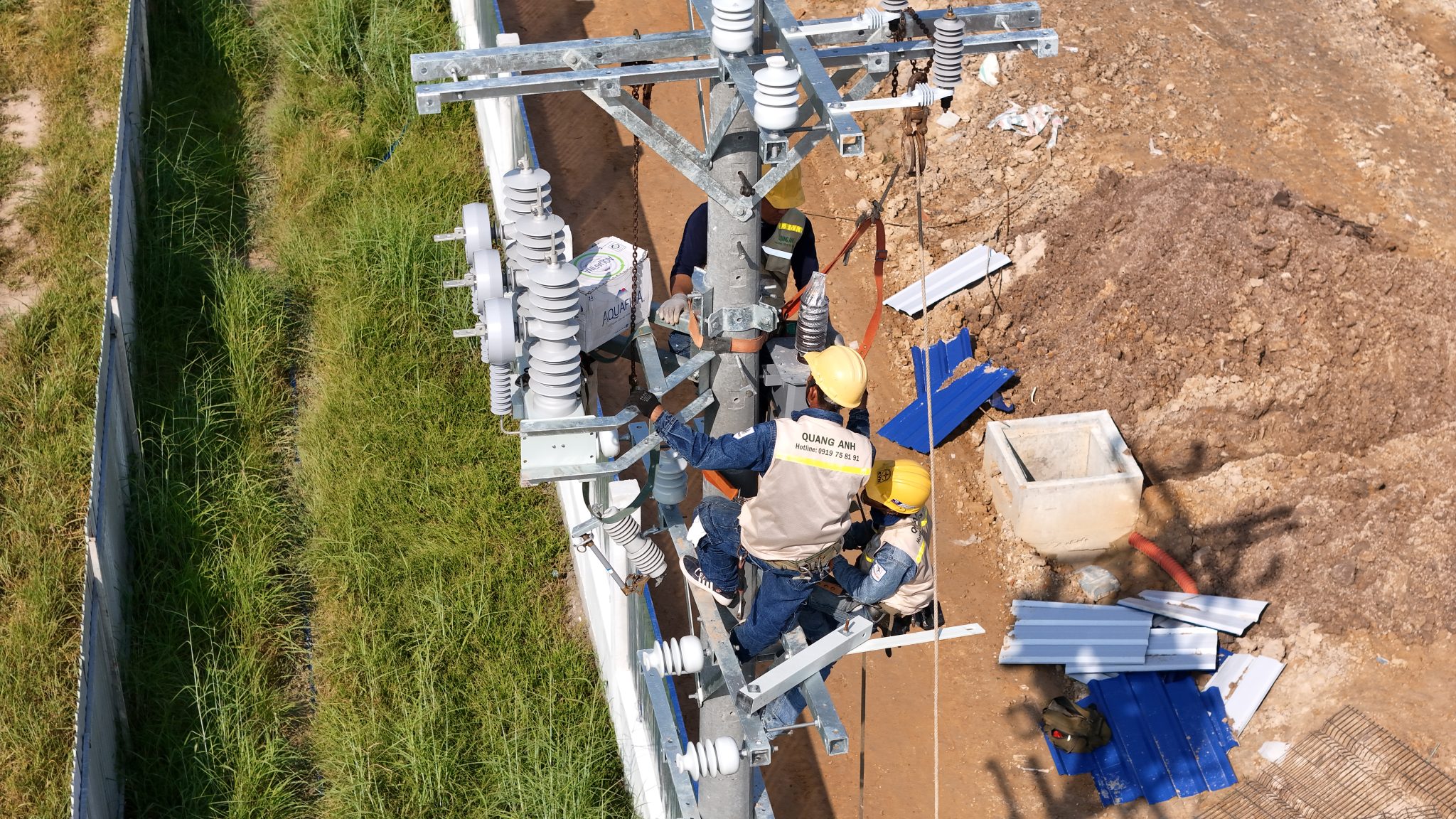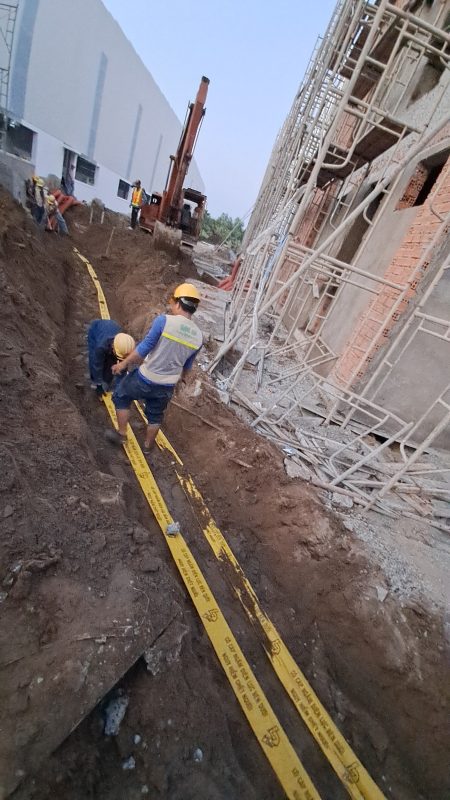Industrial electrical system costs encompass design, materials, and installation, significantly influencing operational expenses in factories or industrial zones.
Key Cost Components in Industrial Electrical Systems
The main cost components for industrial electrical systems are design, materials, and installation. Design expenses depend on complexity and project scope, typically involving electrical schematics and equipment layout. Material costs, such as cables and accessories like electrical cabinets, switches, and lighting, vary with quality and timing of purchase. Installation covers labor costs and detailed processes like wiring and lighting setup. This work can range from VND 60,000 to 200,000 per square meter based on methods like wire pasting, extracting, and integration with water systems.
Identifying the basic cost categories in industrial electrical systems is vital to boost investment efficiency. These costs are generally divided into materials and equipment, labor and installation, and long-term operational and maintenance expenses.
Material and Equipment Costs
One of the largest expenses is materials and equipment. Main power systems include medium voltage cabinets, transformers, and primary switchboards like MSB. Additionally, auxiliary distribution systems for different industrial devices are crucial. Lighting and auxiliary systems such as LAN networks, telephones, and security setups are integral parts of the electrical system.
Labor and Installation Costs
Installation costs require substantial labor investment, covering stages like cable conduit, tray ladder setups, and cable connections. Repair and installation of standalone electrical devices are also essential. Labor costs can be computed per square meter or specific equipment count, such as approximately VND 100,000 per device for electrical installation.
Operation and Maintenance Costs
Industrial electrical maintenance is closely linked to consumable materials and operating team salaries. External services like repairs and maintenance also represent a significant portion of total expenses. Moreover, working capital and auxiliary services during operations should be fully assessed to ensure safety and system stability.
Optimizing the core cost elements of industrial electrical systems helps businesses save money, improve efficiency, and maintain stable operations over time.

Industrial Electricity Production Costs
Industrial Electricity Production Costs
Industrial electricity costs, determined by voltage levels and transformer capacity, range from VND 1,728 to 1,865 per kWh across different voltage levels. This essential operational expense affects monthly totals significantly. For example, a substation under 50 MVA incurs about VND 1,728 per kWh. Systems using voltages from 6 kV to under 22 kV may reach up to VND 1,865 per kWh.
Power costs are a critical aspect of business operations in Vietnam, especially with recent electricity rate hikes driven by Vietnam Electricity (EVN). As of May 2025, rates have increased by a notable 4.8% compared to past figures, adding financial pressure on businesses.
Data from the Ministry of Industry and Trade and EVN reports reveal steady increases in production and operational expenses, including generation, transmission, and distribution costs:
- In 2021, costs reached VND 419,031.80 billion, with a rate of VND 1,859.90 per kWh.
- By 2022, total expenses rose to VND 493,265.30 billion, equating to VND 2,032.26 per kWh, a 9.27% increase from the prior year.
- In 2023, costs continued escalating to VND 528,604.24 billion, with rates hitting VND 2,088.90 per kWh, up by 2.79% compared to 2022.
These trends underscore the rising electricity cost burden on businesses, especially amid challenging export markets and intense competition.
Calculations for production electricity expenses currently apply an average retail price of approximately VND 1,864.44 per kWh. The lowest production rate accounts for about 51% of the average retail price, while the highest can reach about 169%, or VND 3,114 per kWh, depending on usage levels and applicable rates.
Electricity price hikes significantly impact businesses struggling not only with manufacturing input costs but also in adjusting product prices to balance rising expenses.
Rising industrial electricity production costs in Vietnam are evident, with manufacturing rates climbing from VND 1,860 per kWh in 2021 to over VND 2,080 per kWh in 2023. Diverse business electricity rates based on consumption and applicable prices pose challenges for domestic manufacturers.

Solar Power Systems in Industry
Integrating solar power systems is increasingly popular for cost savings. Solar systems ranging from 3kWp to 10kWp have installation costs from VND 75 to 185 million, while larger systems over 10kWp average around VND 9-10 million per kWp. Adopting solar energy in industrial settings not only reduces operational electricity costs but also enhances sustainability and long-term efficiency.
Solar power systems in industry are emerging as a crucial renewable energy solution, vital for alleviating strain on the national grid and optimizing operational costs for Vietnam’s factories and industrial zones.
Potential and Progress Goals
Renewable energy, particularly solar power, is being actively promoted to meet the 2030 goal of capacities between 46,459 MW to 73,416 MW, representing 25.3% to 31.1% of the total electrical mix. By 2050, this is expected to surge to nearly 295,000 MW, exceeding 35%. Vietnam enjoys substantial solar potential, with annual radiation levels at approximately 2,056 kW/m², an ideal condition for industrial solar projects, especially in the Central region and the Mekong Delta.
Industrial Solar System Components
A standard industrial photovoltaic system consists of the following key components:
- Photovoltaic Panels (PV): Convert sunlight into direct current (DC) power.
- Inverter: Transforms DC into alternating current (AC) suitable for industrial machinery.
- Electrical Cabinets and Controllers: Manage, control, and protect the entire system.
- Intelligent Monitoring System: Enables remote tracking of electrical output and equipment status.
- Battery Energy Storage System (BESS): Stores surplus power for use as needed, enhancing stability and cost-effectiveness.
Industrial Applications and Benefits
Industrial solar power offers numerous advantages for green industrial facilities. The clean energy source directly powers machinery, reducing dependency on the national grid, thus lowering electricity costs. Furthermore, surplus electricity can be stored in energy storage systems or sold back to the grid, creating extra revenue streams.
Challenges and Obstacles
Despite its potential, deploying solar power in industry faces policy, legal, and technical challenges. Government support in terms of investment, planning, and pricing frameworks, along with simpler administrative procedures and improved financial support mechanisms, is necessary. Technical issues like integrating solar systems with existing infrastructure must also be addressed.
Solar Equipment Manufacturing in Vietnam
Vietnam is transitioning in solar equipment manufacturing with large-scale factories in Ho Chi Minh City. Yet, the industry needs to refine stages like silicon ore refining from sand and producing complete PV panels to optimize the value chain and reduce import reliance.

Understanding industrial electrical system costs is crucial for optimizing both investment and operations. Choosing appropriate designs, materials, and installation methods not only reduces initial expenses but also lowers long-term operational costs. Additionally, integrating solar power provides a sustainable and cost-effective solution for enterprises.
Interested in setting up and optimizing industrial electrical systems? Contact QuangAnhcons today at Hotline: +84 9 1975 8191 for tailored solutions.
QuangAnhcons offers design and installation services for industrial electrical systems, including solar solutions, to optimize costs and enhance energy efficiency for businesses.
[contact-form-7 id="7239967" title="Contact form 1"]


Related Posts
Tay Ninh Solar Power Planning: Technical Framework, Grid Interconnection, and Rollout Roadmap
Technical overview of solar planning in Tay Ninh: irradiation, grid capacity, permitting, design, operations, and [...]
Dec
Binh Duong Solar Planning: Regulatory Framework, Grid Interconnection, and an Implementation Roadmap for Factories and Industrial Parks
An overview of Binh Duong solar planning: legal framework, interconnection, design, risk management, and an [...]
Dec
Solar Farm Repair: O&M Workflow, IV Curve Diagnostics, Thermography, Inverter Service and Utility-Scale Safety
A utility-scale solar farm repair plan centered on O&M, IV curves, thermal imaging, inverter service, [...]
Dec
Dong Nai Solar Power Plan 2023–2025: Tri An 1,029 MW, Grid Upgrades and the DPPA Pathway
A complete look at Dong Nai’s solar power plan: Tri An 1,029 MW, irradiation potential, [...]
Nov
Quang Ngai Solar Power Plan 2024–2030: Legal Framework, Irradiance Potential, and Development Roadmap
A complete look at Quang Ngai’s solar power plan: capacity targets, irradiance (PVout), development zones, [...]
Nov
Solar Damage Assessment Services: On-Site Procedures, EL/IV/Thermography Testing & Compliance with Standards
Discover IEC/UL/NEC standard solar damage assessment processes: on-site evaluation, EL and IV curve testing, thermal [...]
Nov
Comprehensive Package Estimate for a 1800MVA 500kV Substation: Scope, Configuration 3x600MVA, Standards and Timeline Management
An overview of the 1800MVA 500kV substation estimate: construction scope, configuration 3x600MVA, GIS/AIS, SCADA, standards, [...]
Nov
Factory Electrical Systems: Comprehensive Design and Implementation Guide
Discover the detailed and safe process of factory electrical systems design and implementation. [...]
Oct
Blueprints Required for Factory Construction Permits
Discover the necessary blueprints in factory construction permit applications, from floor plans to electrical and [...]
Oct
What Are the Requirements for a Factory Construction Permit? A Comprehensive Guide
Explore the documentation and steps needed to secure a factory construction permit for streamlined project [...]
Oct
Factory Construction Permit Procedures in Vietnam: Essential Guidelines and Documents
Learn the procedures for securing a factory construction permit in Vietnam, focusing on document preparation [...]
Oct
Key Steps in the Factory Construction Process
Discover the essential steps and requirements for building factories. [...]
Oct
Comprehensive Electrical Substation Solutions by Quanganhcons
Discover the cutting-edge electrical substation solutions offered by Quanganhcons for industrial applications. [...]
Oct
Investment Costs for a 1MWp Solar Power System and Influencing Factors
Explore the investment costs for a 1MWp solar power system in Vietnam and the influencing [...]
Sep
QuangAnhcons: Elevating Wind Energy Solutions
Explore QuangAnhcons' leadership in wind energy and renewable solutions in Vietnam. [...]
Sep
Electrical Contractor Strategies at Becamex Industrial Park
Discover the strategic advancements and partnerships of the electrical contractor at Becamex Industrial Park. [...]
Sep
Investment Insights for 1MW Wind Energy in Vietnam: Costs and Opportunities
Discover the detailed analysis of costs and opportunities for investing in 1MW wind energy projects [...]
Sep
Advanced Electrical Installation Solutions by QuangAnhcons
Explore advanced electrical installation solutions and modern technology with QuangAnhcons. [...]
Sep
Enhancing Industrial Electrical Services with Quanganhcons
Discover Quanganhcons' expertise in industrial electrical services, offering efficient and sustainable power systems. [...]
Sep
Comprehensive MEP Solutions by QuangAnhcons: From Design to Maintenance Excellence
Discover optimal MEP solutions with QuangAnhcons, dedicated to excellence from design through maintenance. [...]
Sep